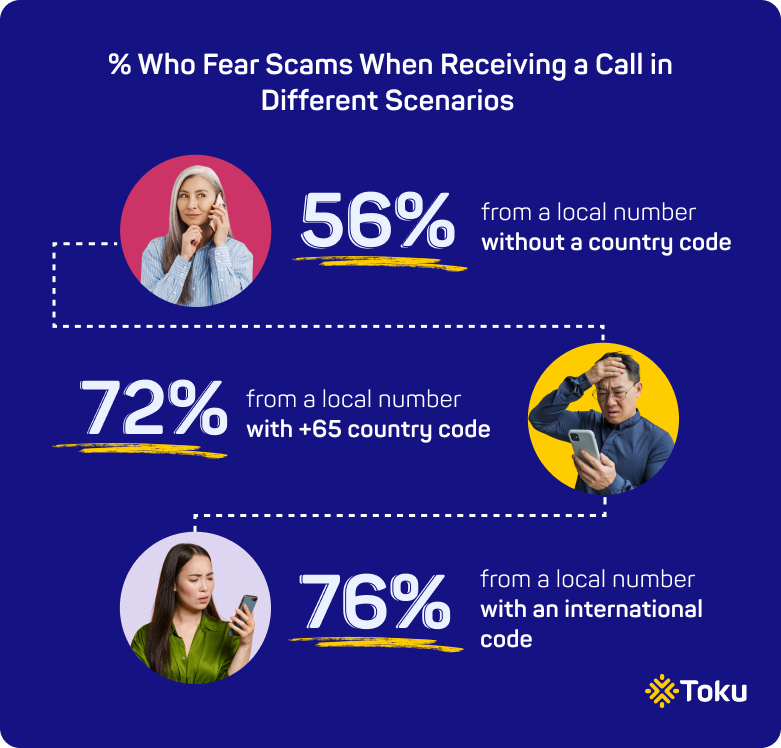What do you get when traditional insurance collides with the world of disruptive digitisation technology? Yup – you guessed it – Insurtech! The ultimate goal? To make insurance easy for both insurers and customers.
As the landscape of digital interaction continues to evolve, mobile apps have become part and parcel of daily life. Already, a staggering 56% of Singaporeans utilise super apps with remarkable frequency, engaging with them several times a week, and 67% of Singapore consumers depend on these platforms for their online shopping needs.
This begs the question:
How do in-app communications shape the future of customer interactions and trust?
This is one of the reasons why we’ve devoted an entire section to the topic in our 2023 Singapore Consumer Engagement Report. There’s a lot to unpack, so if you’re ready to find out more about the latest communication channel preferences in Singapore, get your hands on the full report today.
>> Get Access to Toku Singapore Consumer Engagement Report 2023
The report explores a unique security aspect of the in-app communication feature: its resistance to spoofing.
Against a backdrop of rising scam incidences, security concerns have become a significant issue. In-app communications address these concerns effectively by offering a closed and secure channel for interactions. Some banks in Singapore have already started exploring app-based alternatives like push notifications for transaction alerts and updates, while food delivery giants like foodpanda have introduced in-app calling to connect their agents, riders, merchants and customers to facilitate communications.
This enhanced security is not just about protecting the users; it also plays a crucial role in building and maintaining trust in your brand.

Consider this:
- The majority of consumers would not pick up a phone call regardless of whether it’s a local number with a country code or not, citing their fear of scams as the main reason.
- Similarly, a minority of consumers (36%) state that they are able to trust the source of information received via SMS.
Given that consumers themselves are choosing to ignore SMSes from brands out of fear of being scammed, companies need to think of a surefire way to restore trust in their communications.
That’s where in-app communications come in.
A surging preference across age groups

Our study shows increasing acceptance of in-app channels, with 62% of all consumers opting to seek customer support within applications to resolve their issues. Notably, 49% of those aged 55-60 years old and 74% of those aged 25-34 years old, respectively, prefer contacting a company through the app to resolve issues.
In brief, here are some of the reasons why in-app communications are becoming more popular:
- Consumers want to feel their digital interactions with brands are secure and trustworthy, and the in-app experience is built to deliver this
- In-app communications help customers reduce the guesswork and save time when trying to reach out for support
For a full discussion of the above and how businesses can take advantage of in-app communications,
Consumers’ growing expectations for in-app calling

A telling statistic from our study indicates that 45% of consumers now expect direct support via in-app calling to be available on a brand’s app. This stands in contrast to what we found in our 2022 survey, where 45% of respondents said they don’t communicate in-app because the function was not available.
This expectation underscores another broader trend: customers are not only seeking convenience but also immediacy in their service interactions.
They’re gravitating towards brands that can offer real-time solutions within the digital spaces where they spend a significant portion of their time.
How in-app communications empower richer insights
If you ever wondered how in-app communications can pool data from the customer engagement channels for sales, marketing and customer service use cases, and simplify the analytics under one umbrella, here’s a typical use case to get you thinking about the possibilities.
When a customer explores products in your app and reaches out via an in-app call, every interaction, from browsing to conversation, is captured. This means the business now has more data points available for processing and analysis, which can be used to equip support agents with a complete view of the customer’s experience.
Curious?
>> Check out our report for the full story
Embracing in-app communications: Adapt or fall behind
In a world where immediacy and personalisation are not just appreciated but expected, in-app communications offer a distinctive edge.
Companies that leverage it effectively stand to benefit in multiple ways, including
- Streamlined channel management: by centralising different customer communication channels within their app.
- Enhanced security and trust: In-app communications, unlike phone calls and SMS, are less prone to phishing scams.
- Richer data insights: Consolidating all communications and customer touchpoints within an app empowers companies to tap into a more comprehensive dataset that gives a fuller picture of the entire customer journey.
- Cost-efficiencies and scalability: In emerging markets, in-app communications can lead to significant cost savings on phone calls, which can make a real difference to a company’s bottom-line.
For a full discussion of how data-enriched in-app communications can improve customer experience, check out our blog post below:
>> How Data-Enriched In-App Communications Can Improve Customer Experience in Sharing Economy Apps
 Nora Huin
Nora Huin 


 Beatriz Ruiperez
Beatriz Ruiperez 
 Chok Seng
Chok Seng 
 Vidhi Agarwal
Vidhi Agarwal